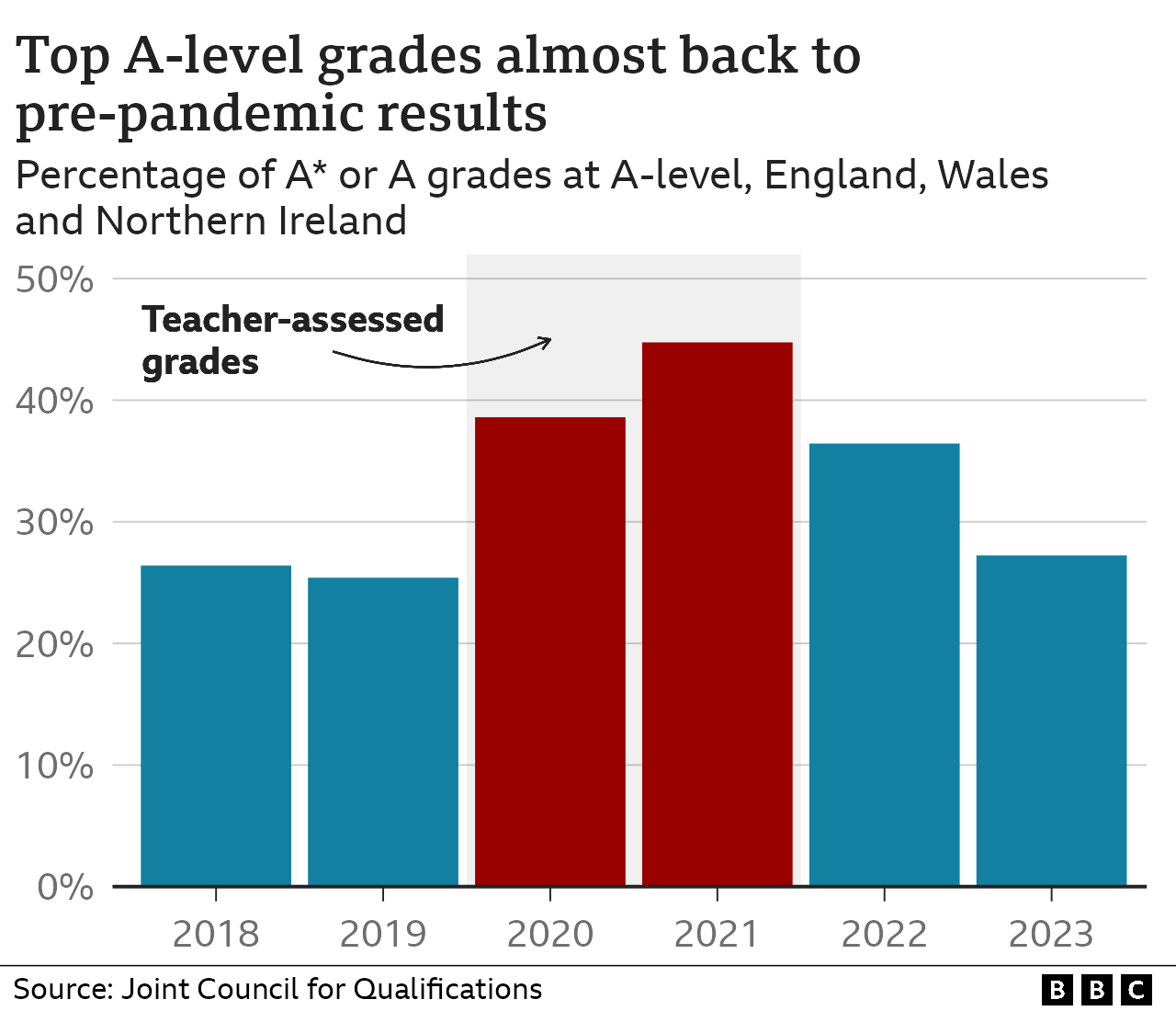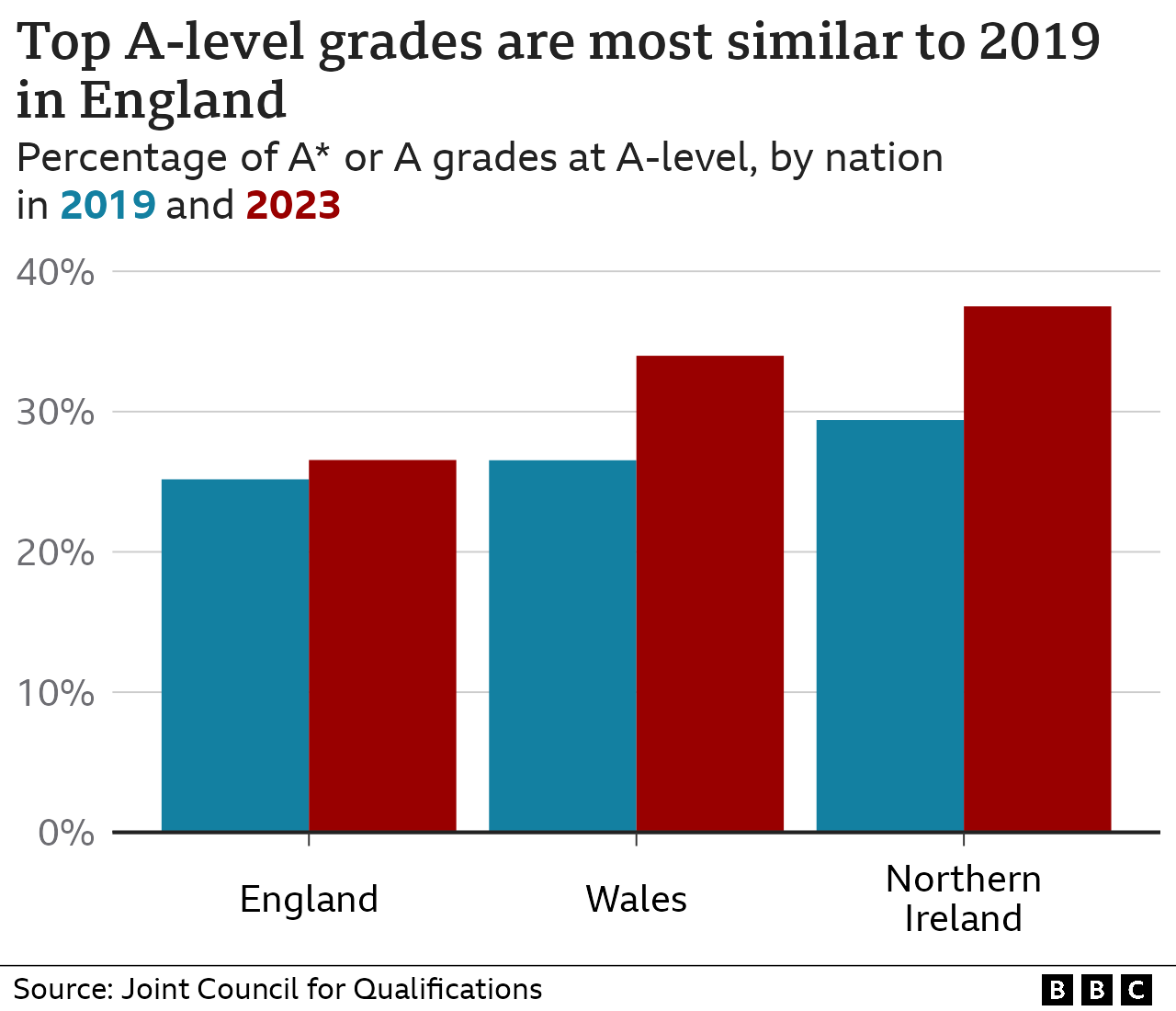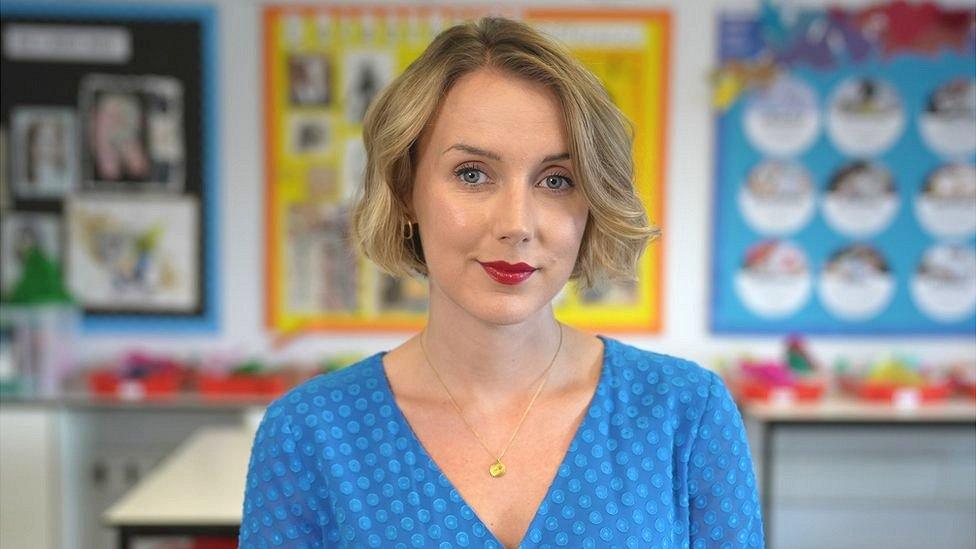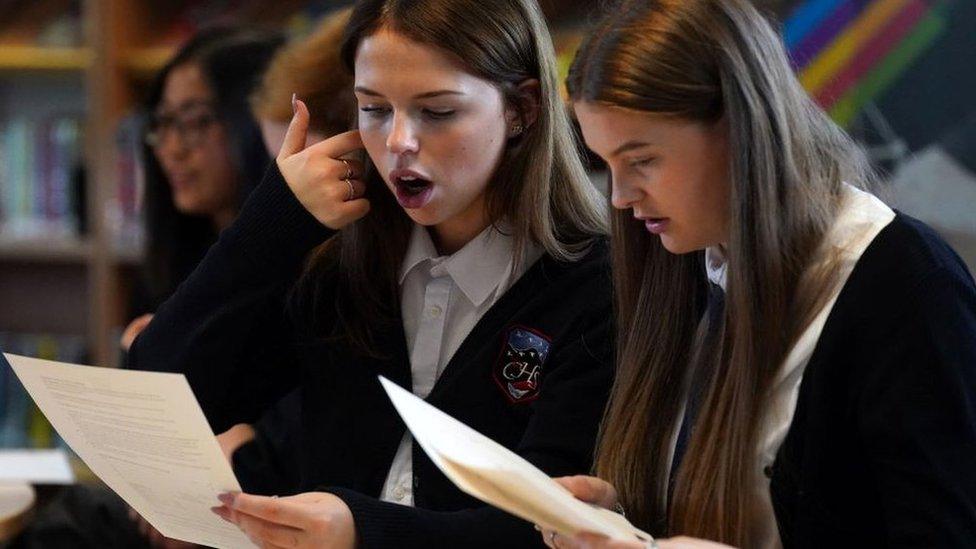Six takeaways from A-level and other Level 3 results
- Published

Teenagers who picked up A-level and other Level 3 results earlier were in Year 10 when Covid hit.
Most spent hours out of the classroom. Their GCSE exams were cancelled and their grades based on what their teachers thought they ought to receive - an approach that led to a boom in top A-level and GCSE grades in 2020 and 2021
The plan ever since has been to bring grades back down, so they carry "weight and credibility" with employers.
So here we are, in the year England's exam watchdog said would be about "getting back to normal".
But it's not quite normal yet.
Here are six things you need to know.
1. Top A-level grades have fallen
Top A-level results in England, Wales and Northern Ireland have fallen for a second year running - with 27.2% of all grades an A* or A.
That's more or less back to where it was in 2019 - and a substantial fall from recent years. It was:
36.4% in 2022
44.8% in 2021
But the drop is unevenly spread.
It is steepest in England, where grades were due to be brought back in line with 2019 this year.
But Wales and Northern Ireland are taking a more gradual approach and this year's grades were always meant to be a bit higher than that.
Overall, there are 73,008 fewer top grades than in 2022 but 31,834 more than in 2019.

2. Grading varied across the UK
Wales and Northern Ireland had a higher percentage of top A-level grades than England before the pandemic - and that remains the case now.
The proportion of A-levels marked A* or A was:
26.5% in England, down from 35.9% in 2022
34% in Wales, down from 40.9%
37.5% in Northern Ireland, down from 44%
This year's drop in top grades was less severe in Wales and Northern Ireland partly because students there sit AS-levels the year before their A-levels. These count towards their final A-level grades and were sat last year, when marking was more lenient.
But it's also because Wales and Northern Ireland are opting for a more phased return to 2019 levels than England. And it's simpler for them to do this because they each have a single exam board, whereas England has multiple.
So was this year's approach fair to students in England?
Ofqual, England's exams regulator, says there was "protection built into the grading process" this year, so students should have achieved the grades they would have if the pandemic had not hit - even if they performed less well in their exams.
Some Covid measures also remained in place in England for this year's exams. A-levels were spaced further apart than before the pandemic, allowing for rest and revision.
But, unlike in the rest of the UK, A-level students in England received no advance information about the topics on which they would be tested.
The Higher Education Policy Institute said this week "England has probably got it wrong", trying to return to normal "too quickly".
But Ofqual head Jo Saxton told BBC News students in England would not be disadvantaged, because universities had been warned different nations were taking different approaches.
In fact, most students go to university in their home nation - Welsh students tend to study in Wales, for example.
But the Association of School and College Leaders has said the government must make employers aware different year groups have been graded differently.

3. The North-South divide persists in England
Overall, 26.5% of this year's A-level grades in England were A* or A - but the proportion varies depending on where you live.
In London and South East it was 30% or more - in the North East, 22%.
The North-South divide existed before Covid but regional differences grew afterwards. And now, London and the South East have a higher proportion of top grades than in 2019.
The Sutton Trust said the divide reflected "patterns of regional prosperity".
Pupils also experienced different amounts of Covid disruption depending on how their part of the country was affected.
And MPs have warned it could take a decade for the gap between disadvantaged pupils and others to narrow to what it was before Covid.

4. The gap between state and private schools remains higher than in 2019
According to Ofqual, 47.4% of grades given to private-school candidates were A* and A, compared with 25.4% in academies .
The gap grew in 2020 and 2021, as fee-paying schools did particularly well when teachers' assessments were the basis for A-level grades.
And although it has narrowed since, it remains wider than in 2019.
Not all pupils received the same support - academic and emotional - when schools closed during lockdowns.
Some schools were better able to provide laptops for remote learning. And their pupils may have had more access to computers and the internet at home or more physical space in which to learn.
The Universities and Colleges Admissions Service (Ucas) said the number of 18-year-olds on free school meals in England heading off to university had risen by 60% since 2019. But the Sutton Trust says the number of students eligible for free school meals has increased by more than that.

5. Girls continue to outperform boys - but only just
Girls outperformed boys again at the top A-level grades but only just - 27.5% of A-levels taken by girls were an A* or A, compared with 26.9% of those taken by boys.
The gap grew, in 2020 and 2021, when grades were based on teachers' assessments, but has narrowed since the return of exams.
And when you look at just A*s, boys overtook girls this year - 9.1% of male entries received an A*, compared with 8.8% of female.

6. T-level students are off to university
This year, 3,448 students opened their T-level results. More than 200,000 received Level 3 BTec results, 33,000 Level 3 Cambridge Technical.
The overall pass rate was 90.5% and 69.2% achieved a merit or above.
A total of 1,830 applied to higher education - and 1,220 have been accepted.
Changes had been put in place to ensure there was not a repeat of last year, when many results were delayed.

Related topics
- Published18 August 2023

- Published13 November
- Published8 August 2023

- Published17 August 2023

- Published17 August 2023




